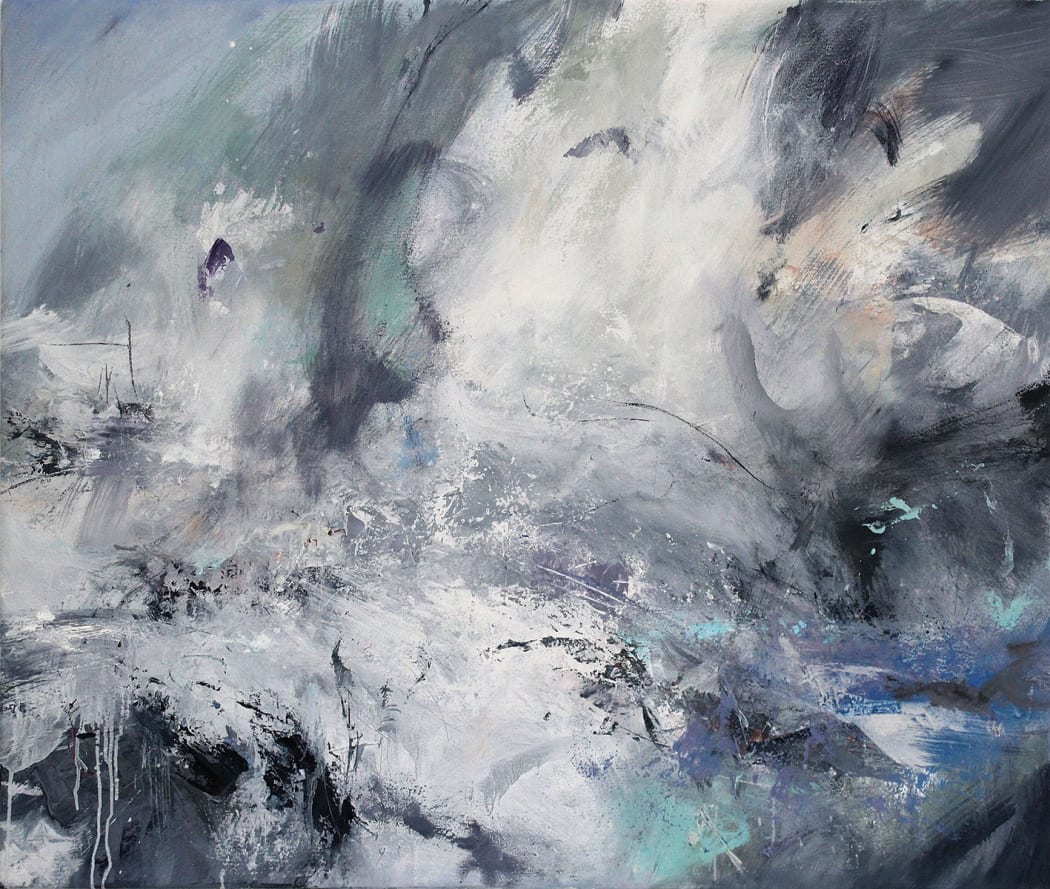
It is the periphery of the land that I am drawn to – the far edges of a place, margins between land and sea which blur with the ebb and flow of tides; areas that feel remote and uninhabited, which seem touched more by the erosion of land, actions of wind and rain, than by human occupation. So Shetland and north to Svalbard are obvious locations for me; exposed to the full force of the oceans, generating high winds and agitated seas, they are places of extremes.
Making work en-plein-air is integral to my working process. I seek immersive experiences - extremes of changing land and sea, and physical and meteorological shifts. I draw while out in boats with waves washing over the deck, crouched with my sketchbook and paints on rocks by the sea, blown across hills by gusts of wind, drenched by spray and sleet, going home with salt-encrusted skin. Sailing from Longyearbyen to Fuglefjorden on a tall ship in 2016, l drew beside glaciers, drifting mist hanging in dark snow-strewn mountains - a thunder-grey and pale blue world.
This is all part of how I work. Such physical encounters with places, first-hand observations, are essential to my practice. My paintings move beyond representational and passive - beyond the detached objective world of topographical features - to become active engagements with landscape.
They are about movement and rhythm of sea and wind, swelling and breaking waves, merging of spray with air, advancing rain and mist, glancing sunlight, elements that refer to something intangible. They are also tempered by knowledge of nature, a profound understanding of its power and resilience. My images acknowledge the legacy of the 18th century Romantic Sublime, confrontations with nature in its most elemental state.
My painting has always been informed by history and science, reading first-hand accounts of storms and loss of life, of the disastrous yet compelling journeys of travellers in the frozen Arctic. I have spent time with oceanographers learning about the complex topography of the sea, the formation of waves - the impact of depth and terrain as a wave ‘feels’ the bottom of the ocean – and of extreme seas. I’ve talked to Shetland fishermen, hearing about the moder dy (‘mother wave’) - the name given over a hundred years ago to a wave-like motion or swell observed best in foggy weather, and by which they could navigate:
‘…no matter how fierce the gale, how wind-riven and uncertain the billow, the methodical undulations of the moder dy could be seen across the hills and valleys of a wind-tormented sea, always setting four-square towards the land.’
All this has made me far more aware of the dynamic complexity of the sea, which, together with my experiences of being out in it, are woven into the artwork.
Making a painting is perhaps like mapping an uncharted place; a searching for a path, a way through. The artist is adrift on an inward voyage; experience mediated through our body, so knowledge of our surroundings will always be partial and particular. The process of painting, of layering and removal, of veiling and unveiling, is perhaps analogous with the sea. Fleetingly the horizon is glimpsed, then tilts and shudders, simultaneously bringing into focus one level while another recedes, cloud becomes a crest of a vast wave; sunlight seems to burgeon from the depth of the waters not from above. I’m trying to transform something physical into something emotional and visceral.
The ocean is at once extraordinary, exhilarating, desirable, terrifying, and tragic. It is an integral part of the human psyche to enjoy nature and the power of the sea at its most elemental. We are drawn to it. Scientist and ecologist Rachael Carson:
‘Each of us carry in our veins a salty stream in which the elements sodium, potassium and calcium are combined in almost the same proportions as seawater. This is our inheritance.’
My art is and will always be a resonance between an internalized world and an external one.
‘And so we re-enter it mentally and imaginatively, recreating a world that, in the deepest part of our subconscious mind, we have never wholly forgotten’.
Janette Kerr PRWA
April 2018
